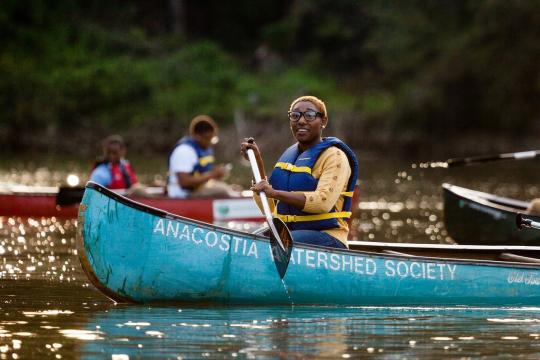Landscape conservation
Chesapeake Conservation Partnership

Spitfire worked with the Chesapeake Conservation Partnership (the Partnership), Eastern Shore Land Conservancy (ESLC) and Appalachian Trail Landscape Partnership (ATLP) to develop an overarching narrative to unite and bolster landscape conservation efforts within the Chesapeake Bay Watershed.
Spanning six states and more than 60,000 square miles, the Chesapeake Bay Watershed is a varied landscape with many diverse groups working to conserve land for a wide variety of reasons, ranging from wildlife protection, outdoor recreation and heritage preservation to water quality and economic and environmental motivators.
The Partnership approached Spitfire to help synchronize and unify collaborative communication about land conservation across this diverse landscape. The Partnership wanted to find a uniting value to tap in its narrative about the watershed, one that could be used in any part of the watershed, at any scale, to create buy-in or motivate audiences including local communities, policymakers and business leaders. The Partnership’s goal, which it began working toward in 2010, is challenging, but straightforward: to preserve two million acres and add 300 public access sites in the watershed by 2025, which will benefit people, economies and nature throughout the sixstate watershed.
Spitfire determined that the Chesapeake Conservation Partnership and its partner organizations needed a new narrative that was flexible and adaptable enough to resonate with diverse audiences across different landscapes, but never shifted in its value focus. To do this, Spitfire embarked on a comprehensive research process which included a materials review to identify how the Partnership and its members and partners talk about their shared land conservation vision, a media scan to understand current narratives about land conservation in key regions and stakeholder interviews with individuals representing the Partnership’s member organizations to identify key messages, regional challenges and ways to support members’ communication efforts.
Spitfire ultimately created a narrative that connects land conservation to quality of life and developed a toolkit to guide partnership members through tailoring the narrative into messages for five different focus areas prioritized by CCP: farms, forests, heritage, health and habitat.
To equip partnership members with the tools and resources they needed to put the narrative to use, Spitfire developed a toolkit with guidance on messaging, ways to tailor the narrative, visual storytelling and delivering an elevator pitch. We also held four messaging trainings in key watershed regions to train members to use the tailored messages to connect with their constituencies and fold the narrative into their ongoing communication work.
Now equipped to speak with one voice, the Partnership has all the tools it needs to advance support for land conservation and protect the Bay and its watershed for generations to come.